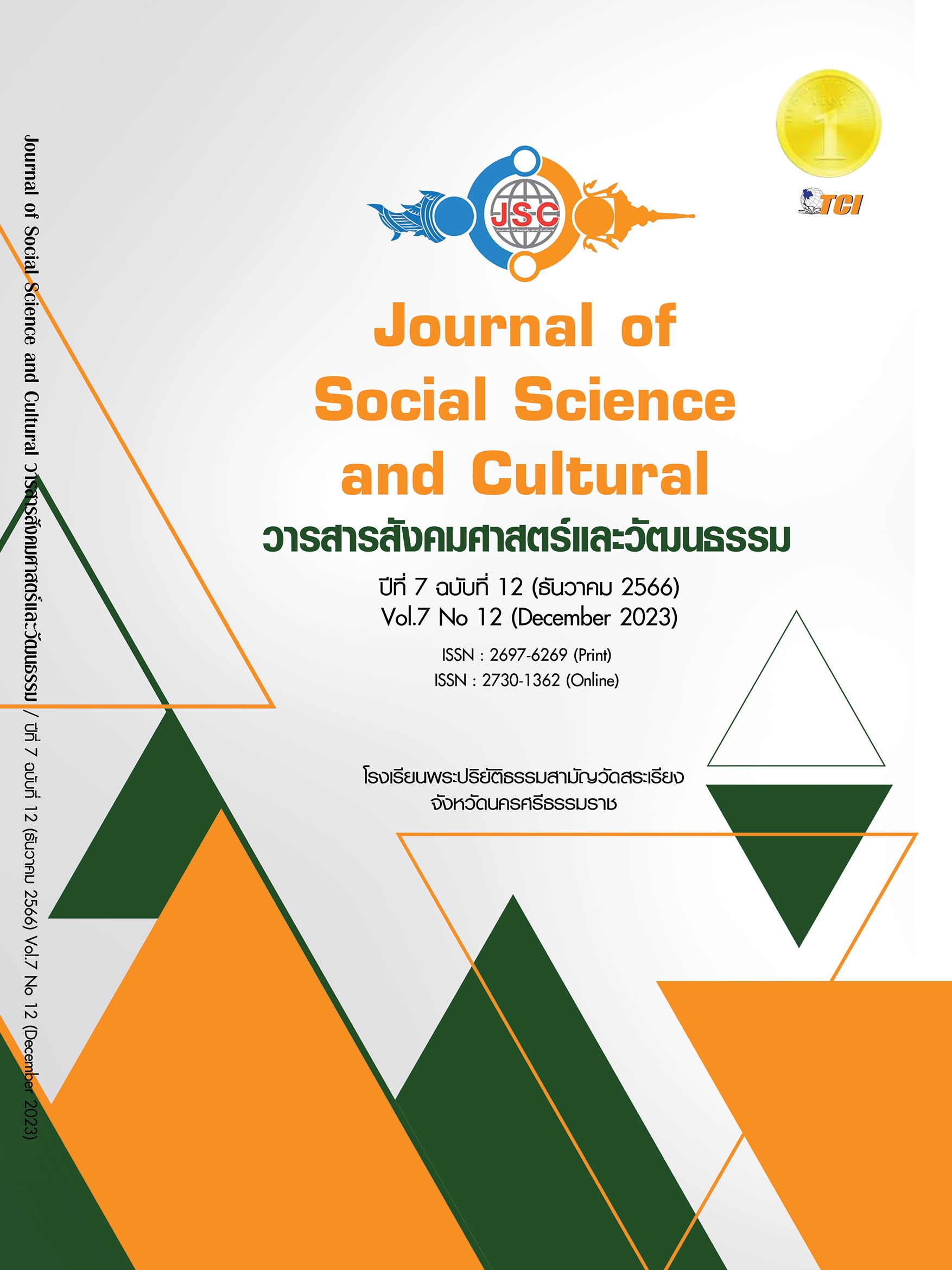STRATEGIES FOR COMMUNITY ENTERPRISE DEVELOPMENT BASED ON THE CONCEPT OF CIRCULAR ECONOMY, REGIONAL AREAS UPPER NORTHEAST 1
Main Article Content
Abstract
The purposes of this research were to: 1) study the problem for community enterprise development based on the concept of circular economy and 2) determine the strategies for community enterprise development based on the concept of circular economy, regional areas Upper Northeast 1. Mixed method research. Phase 1: Step 1: The target group was experts with knowledge and experience in developing community enterprises according to the circular economy concept. The research tools were semi-structured Interview. Data were analyzed by summary content. Step 2: The sample group was representatives of small and medium-sized enterprises in the Upper Northeast 1. The research tool was questionnaire. Data were analyzed by frequency, percentage, mean, and standard deviation statistics. Phase 2: Step 1: make a strategy. Step 2: The target group was experts with knowledge and experience in developing community enterprises according to the concept of circular economy. The research tools were suitability and feasibility assessment form. The research results showed that: The problem and determine the strategies for community enterprise development based on the concept of circular economy, regional areas Upper Northeast 1 consisted 1) production of a variety of products supporting the zero-waste concept, 2) Designing goods and products that are environmentally friendly, 3) Using the zero-waste concept. to be applied in community enterprises, 4) using alternative energy to produce more, 5) production for long product life and 6) participation of community enterprises. The Strategies for community enterprise development consisted 6 strategies. when assessing the suitability and feasibility of all aspects.
Article Details
References
กระทรวงวิทยาศาสตร์และเทคโนโลยี. (2562). BCG Economy Model. เรียกใช้เมื่อ 10 กรกฎาคม 2566 จาก https://www.bcg.in.th/data-center/articles/bcg-economy-model/
กษิดิศ ใจผาวัง. (2561). แนวทางการประยุกต์ใช้ CIPP Model เพื่อวัดความยั่งยืนของวิสาหกิจชุมชนที่มีการใช้กลยุทธ์เศรษฐกิจสร้างสรรค์. วารสารวิทยาการจัดการ มหาวิทยาลัยราชภัฏเชียงราย, 13(2), 60-84.
คัทธลี เจียมสมบูรณ์เลิศ และกฤษดา เชียรวัฒนสุข. (2565). กลยุทธ์การตลาดสีเขียวสำหรับอุตสาหกรรมก่อสร้างภายใต้แนวคิดเศรษฐกิจหมุนเวียน. วารสารศิลปการจัดการ, 6(1), 286-306.
ชุติพงศ์ คงสันเทียะ และชฎล นาคใหม่. (2566). การพัฒนาผลิตภัณฑ์ชุมชนภายใต้แนวคิดเศรษฐกิจ BCG: กรณีวิสาหกิจชุมชนแปรรูปกล้วย ตำบลนางิ้ว อำเภอสังคมจังหวัดหนองคาย. วารสารสังคมศาสตร์และวัฒนธรรม, 7(7), 79-93.
ทัพไท หน่อสุวรรณ และคณะ. (2566). การเกษตรในเมืองกับ BCG Economic Model. เรียกใช้เมื่อ 10 กรกฎาคม 2566 จาก https://www.mnre.go.th/attachme nt/iu/d ownload. php?WP=qU IcnKt0pQEgZaqCGWO ghJstqTgcWat2pQqgZUplGQEgG2rDqYyc4Uux
นฤมล อนุสนธิ์พัฒน์ และชเนตตี พุ่มพฤกษ์. (2565). ทางรอดและแนวทางการปรับตัวของวิสาหกิจชุมชนแนววิถีใหม่ หลังวิกฤติ COVID-19 ของไทย. วารสารมหาจุฬานาครทรรศน์ มหาวิทยาลัยมหาจุฬาลงกรณราชวิทยาลัย, 9(1), 1-19.
บุญชม ศรีสะอาด. (2554). การวิจัยเบื้องต้น. กรุงเทพมหานคร: สุวีริยาสาส์น.
ยุทธ ไกยวรรณ์. (2545). พื้นฐานการวิจัย. กรุงเทพมหานคร: สุวีริยาสาส์น.
เลิศลักษณ์ เจริญสมบัติ. (2564). การประยุกต์ใช้แนวคิดระบบเศรษฐกิจหมุนเวียนกับวิสาหกิจชุมชน. วารสารสังคมศาสตร์ มหาวิทยาลัยศรีนครินทรวิโรฒ, 24(1), 145-155.
สำนักงานสภานโยบายการอุดมศึกษา วิทยาศาสตร์ วิจัยและนวัตกรรมแห่งชาติ. (2564). สภานโยบายการอุดมศึกษาฯ เคาะแผนด้านการอุดมศึกษา และแผนด้านวิทยาศาสตร์ วิจัยและนวัตกรรม ปี 66-70 เสนอเพิ่มความท้าทายช่วยขยับไทยก้าวสู่ประเทศพัฒนาแล้วในปี 2570. เรียกใช้เมื่อ 10 กรกฎาคม 2566 จาก https://bcg.in.th/news/plan-2566-2570/
Yamane, T. . (1973). Statistics: an introductory analysis. New York: Harper & Row.


